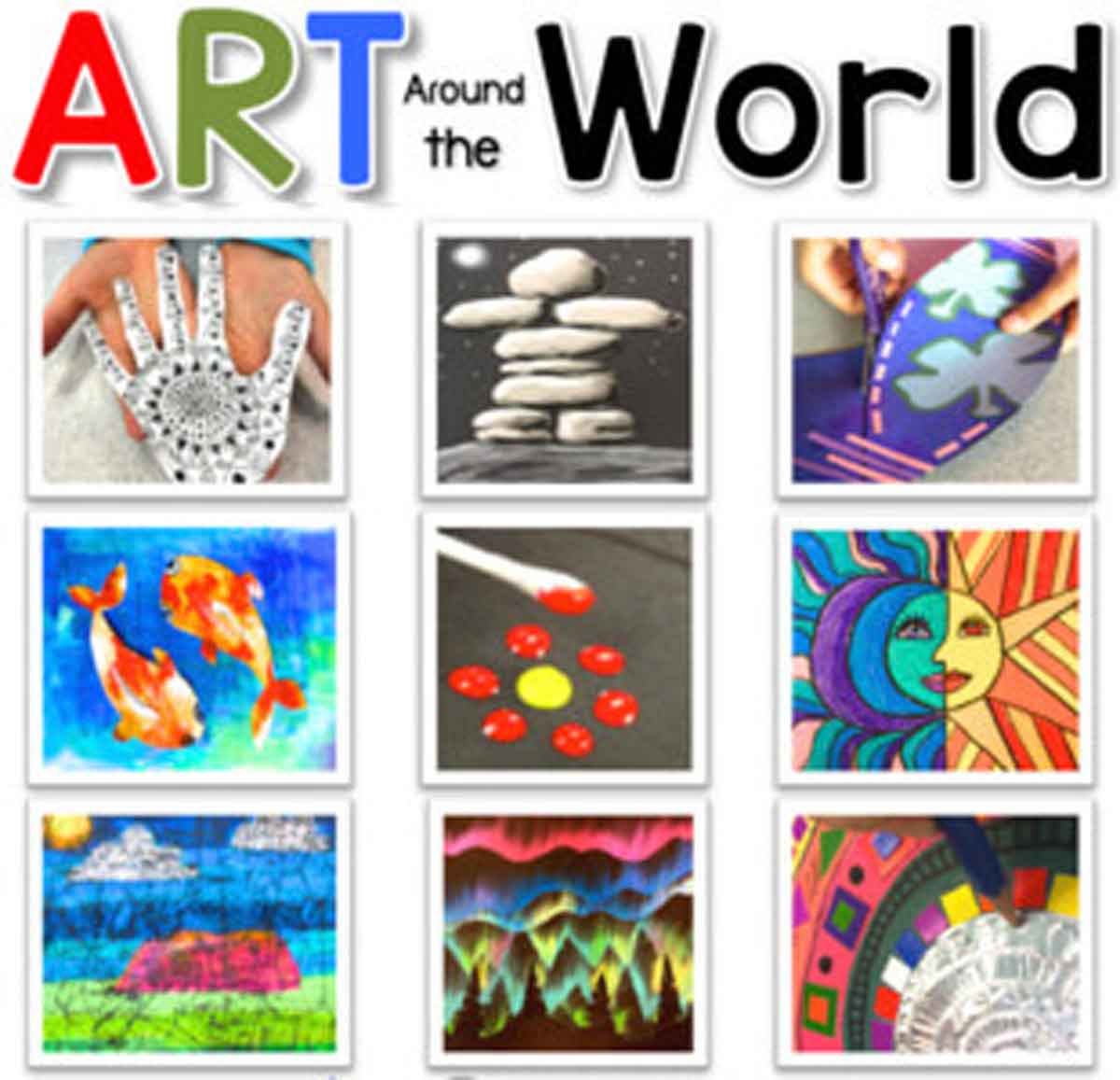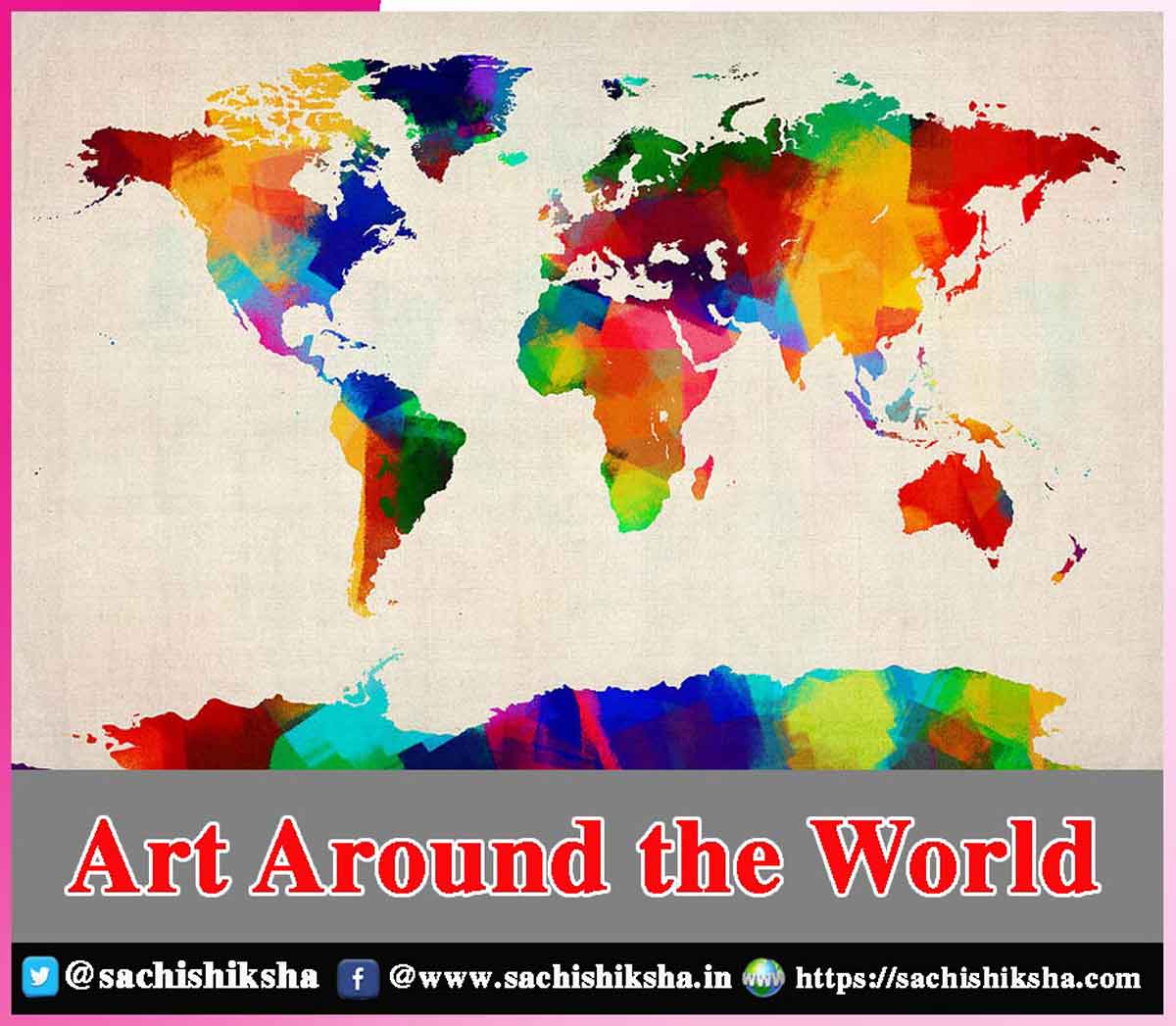Art Around the World
Introduction: Art serves as a universal language, transcending borders and cultures to express the depths of human experience and creativity.
From the ancient cave paintings of Lascaux to the contemporary installations of the 21st century, art reflects the diversity, richness, and interconnectedness of cultures around the world. This essay tries to explore the multifaceted landscape of art across different continents, tracing its evolution, significance, and enduring impact on societies and individuals.
Table of Contents
Europe: The Cradle of Western Art

The works of Michelangelo, Leonardo da Vinci, and Raphael epitomize the pinnacle of artistic achievement during this era, while movements such as Impressionism, Cubism, and Surrealism revolutionized the artistic landscape in the 19th and 20th centuries. Europe’s contribution to art extends beyond its borders, influencing and inspiring artists around the globe with its timeless masterpieces and innovative techniques.
Asia: A Kaleidoscope of Tradition and Innovation
Asia boasts of a rich and diverse artistic heritage that spans thousands of years, encompassing a myriad of styles, mediums, and cultural influences. From the exquisite calligraphy of China to the vibrant colours of Indian miniatures, Asian art reflects a deep connection to nature, spirituality, and the interconnectedness of all things.
The intricate woodblock prints of Japan, the ornate temple carvings of Southeast Asia, and the serene landscapes of traditional Korean ink paintings showcase the region’s unparalleled craftsmanship and aesthetic sophistication. In recent decades, Asia has emerged as a powerhouse in the contemporary art world, with cities like Beijing, Tokyo, and Mumbai serving as vibrant hubs of creativity and innovation, pushing the boundaries of tradition and experimentation.
Africa: Expressions of Identity and Heritage
Africa’s rich artistic traditions encompass a diverse array of styles, techniques, and cultural expressions, reflecting the continent’s complex history, traditions, and contemporary realities. From the intricate beadwork of the Maasai people to the monumental sculptures of the Benin Kingdom, African art embodies a deep reverence for ancestry, community, and spirituality.
Masks, sculptures, textiles, and paintings serve as potent symbols of identity, heritage, and resistance, challenging stereotypes and celebrating the resilience and creativity of African people. Contemporary African artists continue to draw inspiration from their cultural roots while engaging with global themes and issues, offering fresh perspectives and insights into the complexities of modern African society.
The Americas: From Ancient Civilizations to Contemporary Innovations
The Americas boast of a rich and diverse artistic heritage that spans millennia, encompassing a vast array of indigenous cultures, traditions, and artistic expressions. From the monumental pyramids of the Maya to the intricate textiles of the Inca, pre-Columbian civilizations left behind a legacy of awe-inspiring architecture, sculpture, and craftsmanship.
With the arrival of European colonizers, indigenous artistic traditions merged with European styles, giving rise to unique hybrid forms such as Mexican Baroque and Andean Colonial art. In the 20th and 21st centuries, artists from across the America have embraced a wide range of styles and mediums, from the vibrant murals of the Chicano movement to the experimental installations of contemporary artists like Olafur Eliasson and Yayoi Kusama, showcasing the region’s dynamic cultural landscape and diverse artistic voices.
Oceania: Exploring the Artistic Traditions of the Pacific Islands
The Pacific Islands are home to a rich and diverse array of artistic traditions, encompassing a wide range of styles, techniques, and cultural expressions. From the intricate woodcarvings of the Maori to the vibrant tapa cloth of the Pacific Islanders, art plays a central role in Pacific Islander cultures, serving as a means of communication, ritual, and community expression.
Traditional motifs and symbols are imbued with deep spiritual significance, reflecting the interconnectedness of humanity and the natural world. In recent years, Pacific Islander artists have gained international recognition for their innovative fusion of traditional techniques with contemporary themes, addressing issues such as climate change, cultural identity, and social justice through their work.
Conclusion
Art around the world is a testament to the boundless creativity, diversity, and resilience of human civilization. From the ancient cave paintings of prehistoric times to the cutting-edge installations of the 21st century, art serves as a mirror reflecting the complexities of human experience and the interconnectedness of cultures across time and space.
By exploring the artistic traditions of different continents and regions, we gain a deeper appreciation for the universal language of art and its enduring power to inspire, provoke, and unite people from all walks of life. As we celebrate the rich tapestry of global artistry, let us embrace the beauty, diversity, and profound significance of artistic expression in all its myriad forms.













































